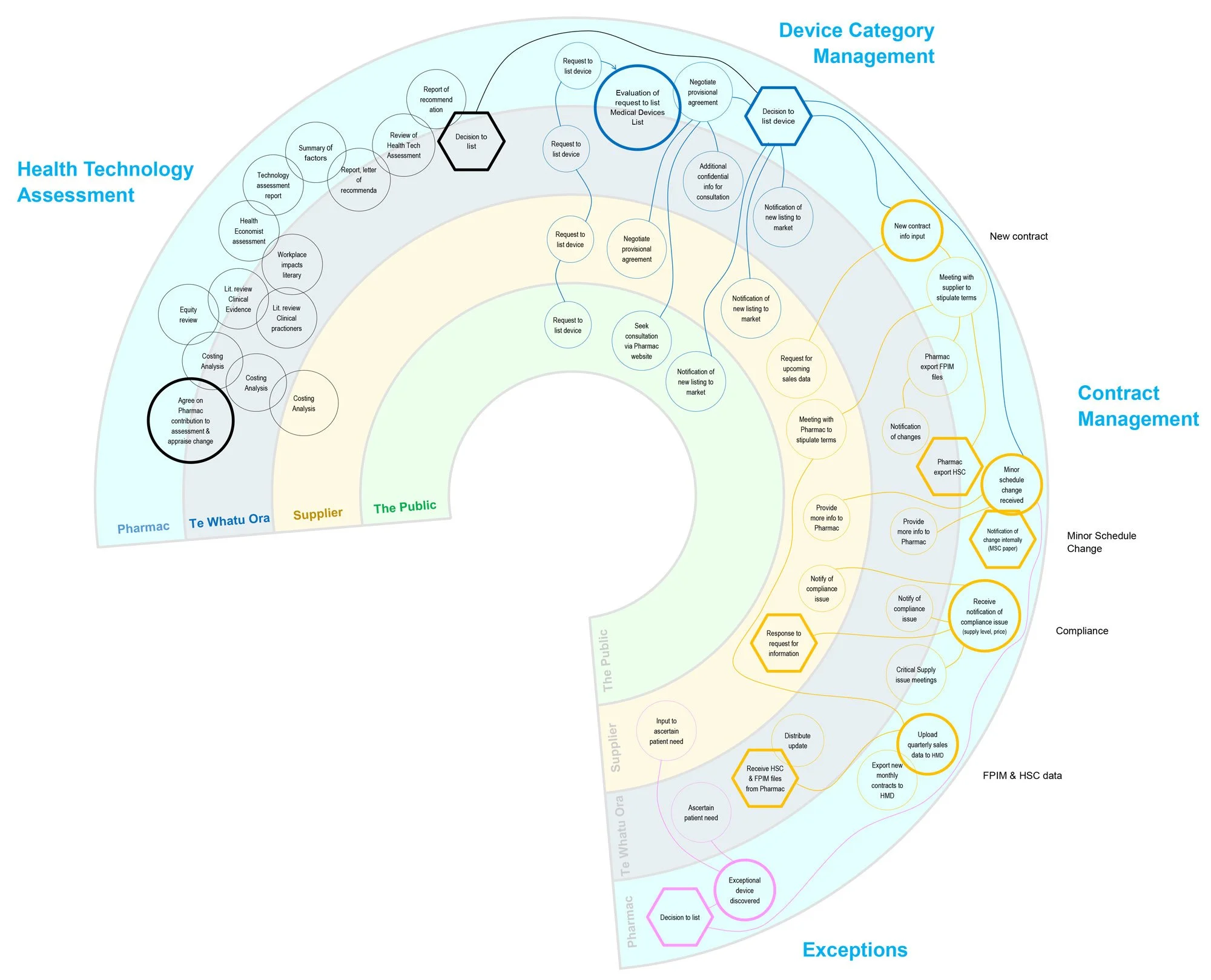Pharmac
Pharmac is the government agency which funds medicines and medical devices in New Zealand.
While around 2,000 medicines are funded, there are over 230,000 medical devices - everything from dressings and syringes, through to hospital beds and MIR machines.
As the Service Designer for the Medical Devices Programme Delivery, my role includes:
Defining the current state of the service
Identifying stakeholder groups
Researching user needs
Problem identification
Journey mapping
Process mapping
Service blueprints
Setting a purpose and vision
Strategic design and user-centred communication
Understanding the service
After consulting existing documentation and government policies, I began conducting interviews internally at Pharmac to better understand the service offering in the medical devices space. I used Miro to map the various work stages and process flows.
Visualising the service
A large part of a a service designer’s role is to represent their findings visually. This enables stakeholders to easily understand service components and how they fit into the whole.
It allows an organisation to identify gaps in their service.
System-wide data flow
Current state service delivery
User interviews
After conducting interviews from key stakeholder groups, I synthesised the insights in Miro.
User journeys
From these insights I was able to develop journey maps for our user groups. These proved invaluable for us at Pharmac to understand and empathise with our users, and in setting the direction of the future service.
Designing the new
Taking the work onto the walls of a dedicated space allowed me to structure components and ideas, and to collaborate with SMEs. I took each work activity and allocated it to one of seven beneficial outcomes of the service I had identified. Using the double diamond, I was able to identify the problem space, and develop solutions with stakeholders.
Creating digital documents of the work
By developing a service blueprint which broke down the work stages - frontstage, backstage, supporting actvities, and the physical evidence at each step, I was able to begin testing scenarios and refining the service.








